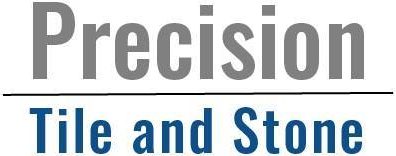Planning a shower tile installation? If so, you’ve probably come across the common debate: Should you tile the shower floor or walls first?
This decision impacts the efficiency, durability, and appearance of your shower. Some experts recommend tiling the shower walls first to avoid damaging the floor, while others argue that starting with the tile shower floor ensures better waterproofing and shower drainage.
So, which method is best? In this guide, we’ll break down the pros and cons of each approach, helping you choose the best technique for your bathroom renovation or shower remodeling project.
So, What Should Really Be Tiled First: The Shower Floor or Walls?
There’s no single correct answer. It primarily depends on your priorities and the layout of your shower. Both have their own pros and cons that you need to consider carefully.
Pros and Cons of Tiling the Shower Walls First
Many professional tilers prefer to start with the walls. Here’s why:
Prevents Floor Damage
When installing shower wall tiles first, you eliminate the risk of dropping tile adhesive, grout, or heavy tiles onto freshly laid floor tiles. This prevents accidental chipping, cracking, or stains, preserving the integrity of your bathroom flooring. Additionally, it reduces the need for extra cleaning or repairs caused by falling debris.
Easier to Measure and Align
Starting with the wall tiles allows you to leave a small gap at the bottom where the final row of tiles will meet the floor tile installation. This makes it easier to cut and adjust tiles for a precise fit, ensuring a seamless transition between surfaces. A well-aligned tile layout also enhances the overall symmetry of the shower.
Saves Time
If you install the tile shower floor first, you must wait for the mortar and grout sealing to fully cure before proceeding with the walls. Tiling shower walls first allows you to work more efficiently without delaying your bathroom remodeling project.
Potential Drawback
One downside of this method is ensuring a tight fit between the wall and floor tiles. You’ll need to measure carefully so the floor tiles slide underneath the bottom row of wall tiles for a polished, waterproof finish. If not planned correctly, gaps or improper sealing at the base may lead to moisture issues and mold growth.
Pros and Cons of Tiling the Shower Floor First
Some tile installers prefer to begin with the floor. Here’s why:
Ensures Proper Waterproofing
When you tile the shower floor first, the wall tiles overlap the edges, directing water runoff downward and preventing leaks. This technique creates a more watertight seal, reducing the risk of water damage over time. Properly sealing the floor-to-wall transition further enhances moisture resistance and helps prevent mold growth.
Achieves a Better Aesthetic
Tiling the floor first allows the wall tiles to sit neatly over the edges, hiding any uneven cuts in the floor tiles and creating a polished, professional finish. This method also results in a seamless look that enhances the overall visual appeal of your shower tile installation.
Eliminates the Need for Ledger Boards
If you start with the wall tiles, you may need a ledger board to support the lower rows until the tile adhesive sets. Tiling the floor first eliminates this extra step.
Potential Drawback
This method requires extra care to protect your freshly installed floor tiles from dust, mortar, and tile debris while working on the shower walls. Additionally, ensuring the correct slope for drainage before tiling is crucial to prevent water pooling, which can lead to long-term water damage and safety hazards.
A Hybrid Approach: The Best of Both Worlds
Some tilers use a combination of both methods for optimal results:
- Begin tiling the second row of wall tiles first, leaving space for the bottom row. This ensures the bottom row aligns perfectly with the floor tiles, creating a seamless look.
- Install the shower floor tiles. Doing this before the bottom row of wall tiles allows the wall tiles to overlap, improving waterproofing and aesthetics.
- Complete the bottom row of wall tiles for a perfect fit. This method hides any uneven cuts on the floor tiles and creates a polished finish.
This approach balances proper alignment, reduced floor damage, and optimal waterproofing.
Common Mistakes to Avoid When Tiling a Shower
To ensure a successful tile installation, avoid these common mistakes:
- Not checking for proper floor slope – Ensure the shower floor slopes toward the drain to prevent water buildup, which can lead to standing water and mold growth.
- Skipping waterproofing – Always apply a waterproofing membrane before tiling to prevent leaks and moisture damage, which can weaken the structure over time.
- Using the wrong type of mortar or grout – Choose a waterproof, mold-resistant grout for durability, as standard grout can absorb moisture and deteriorate quickly.
- Neglecting expansion gaps –Leave small gaps at the edges to accommodate tile expansion and contraction, preventing cracking or buckling over time.
- Failing to seal grout lines – Sealing grout helps prevent water absorption, staining, and mold growth, extending the lifespan of your shower tiles.
Waterproofing the Shower Before Tiling
Before you start tiling, it’s crucial to apply a waterproofing membrane to prevent leaks and moisture damage. Waterproofing methods include:
- Waterproofing backer boards – Cement boards provide a sturdy, water-resistant surface for tiling.
- Liquid waterproofing membranes – Apply a roll-on or paint-on waterproofing membrane to seal surfaces.
- Sheet membranes (e.g., Schluter Kerdi) – These waterproof sheets act as a barrier against moisture penetration.
Skipping this step can lead to costly repairs in the future, so always prioritize proper waterproofing before installation.
Conclusion
Deciding whether to tile the shower floor or walls first depends on your priorities. If you want to prevent floor damage and speed up installation, tiling the walls first is a great choice. On the other hand, if you prioritize waterproofing and achieving a seamless aesthetic, starting with the floor may be the better option. For those who want the best of both approaches, a hybrid method—tiling the second row of walls first, installing the floor, and then finishing the bottom row—can offer the perfect balance. Regardless of your chosen method, careful planning, precise measurements, and proper waterproofing will ensure a durable, well-finished, and long-lasting shower.
If you’re unsure about the best approach or need expert guidance, consider reaching out to a professional tile installer. Their expertise ensures a durable and flawless shower finish.

